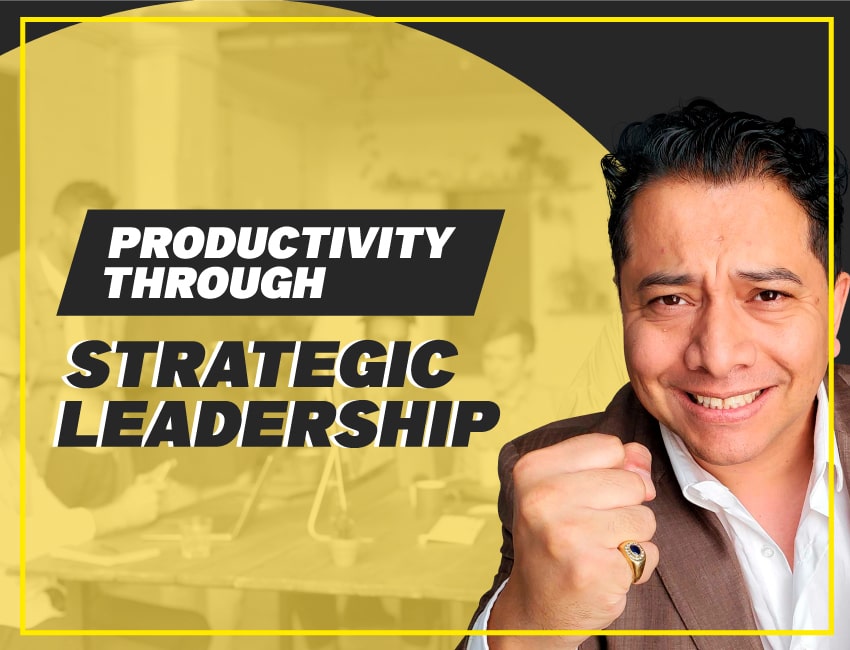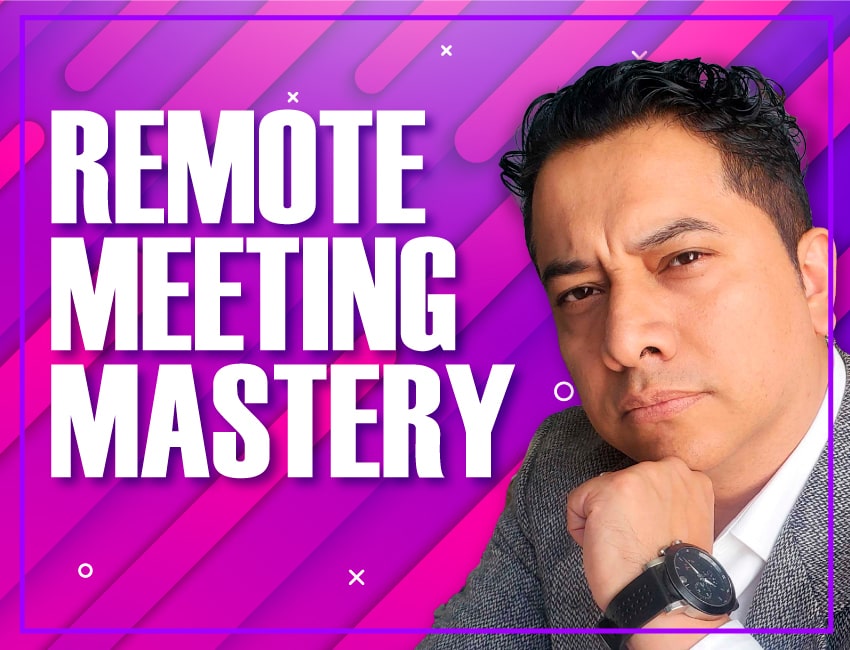Stay Ahead of the Game: Anticipating Change with Business Triggers

If there’s one thing that the business world has taught us, it’s that change is the only constant. In today’s fast-paced world, technology is like a personal trainer, constantly pushing us forward and causing change to happen at breakneck speed. Leaders who anticipate change stay ahead of the game while the losers are left reacting to it. To keep up, businesses must be prepared for anything, and that’s where business triggers come in.
Business triggers are a set of factors that can either make or break your business. Due to the shrinking lifecycle of ideas and products, businesses today feel the pressure of the narrowing window between seismic changes in any industry and across cultures. The period between the moment you come up with a breakthrough concept to when somebody else comes up with a better one is no longer decades or years — it’s now just months, or sometimes sooner. Your competition is always watching, and mass communication creates a culture that hinges on sky-high expectations and very low patience. To succeed, business leaders must adapt to the top business triggers that drive these changes and recognize that every move we make sets the stage for what’s next.
Become the Chess Player, not the Chess Piece: How Business Triggers Can Help You Succeed
Leaders in every industry find a way to become the chess player, not the chess piece. Finding business success is about creating value, monitoring trends, and anticipating the challenges coming down the pike. The hard fact is that 96% of all businesses fail within any ten-year period, with a little less than 4% surviving. And that doesn’t mean they’re profitable; it just means they’re still standing. The 10-year benchmark is just the beginning of a successful business. We anticipate change on the horizon by understanding that there are triggers of business crises.
The truth is that anyone can be a player in the business world, but the key is to choose to be a chess player, not a chess piece. To succeed, you must be in control, anticipate what is to come, and understand business triggers. These triggers can help you stay ahead of the curve and make informed decisions that lead to success. By accepting this truth, mapping the terrain ahead, and constantly scanning the periphery for outsiders, you can create limitless opportunities.
The Seven Business Triggers: Factors to Anticipate and Prepare For
Let’s take a closer look at the seven business triggers that most people fail to anticipate. Think of these as big red reset buttons with the uncanny ability to wipe out established businesses – and sometimes entire industries – almost overnight. These triggers can be the start of a crisis, or they can be the start of limitless opportunities. As a leader, you must be aware of these triggers and be prepared to pivot when necessary.
The seven business triggers are constantly evolving, but they include factors such as changing customer needs and expectations, technological advancements, economic shifts, global events, environmental concerns, competition, and regulatory changes. By understanding these triggers and how they impact your business, you can anticipate and prepare for potential challenges, as well as identify opportunities for growth and innovation.
A Change in Your Competition
Competition is always a risk, no matter the industry. Blockbuster was a leading video rental company, but it failed to recognize the emerging competitor, Netflix, which became one of the biggest streaming platforms globally. In 2000, Netflix offered to sell itself to Blockbuster for only $50 million, but Blockbuster refused. Four years later, Blockbuster launched its streaming service, but by that time, Netflix had already attracted 4.2 million subscribers. Eventually, Blockbuster filed for bankruptcy, while Netflix achieved a worth of around $13 billion in 2010. The lesson learned? Always acknowledge emerging competition.
A Change in Technology
Business leaders who resist technological trends risk falling behind their competitors. If you become a leader who can use technology to add value, you become the disrupter, not the disrupted. For example, Facebook purchased Instagram in 2012 for $1 billion, which revolutionized mobile photo sharing. WhatsApp, a mobile messaging service, was also purchased by Facebook for over $16 billion, making the company worth its weight in SMS-text-defying gold. Embrace tech shifts, even if you use cutting-edge technology today, since those tools will age.
A Change in Culture
The rise of peer-to-peer sharing websites like Napster, Limewire, and Kazaa triggered a cultural change that led to music piracy, which decimated an entire industry. People believed that downloading music was not stealing since they viewed information as free. The music industry lost nearly 60% of its revenue overnight when Napster arrived in 1999, dropping from $38.6 billion to $16 billion in the following year. The lesson learned? Stay aware of cultural shifts and their potential impact on your business.
In the world of business, external and internal factors can trigger change. Two of these triggers include changes in the economy and in customers’ lives. Both can affect a company’s sales, growth, and success. Let’s examine how these triggers can transform a business and what we can learn from them.
Economic Change
Real estate agents and business owners alike can tell you how a downturn in the economy can affect their livelihood. It’s not just real estate; the economy can affect industries across the board. Consider the four-dollar cup of coffee you purchase every morning at Starbucks. When the global financial crisis hit in 2008, Starbucks was not immune to the effects. The company’s quarterly earnings tanked, and sales figures took a sharp turn for the worse. Yet, in the end, the crisis proved to be a learning experience for the company.
Howard Schultz, the former Starbucks executive chairman, returned as CEO during the crisis, and he cut costs and orchestrated a store closure for employee retraining. He refocused on Starbucks’ core business and reignited the love for the company’s customers. In the end, Starbucks emerged from the crisis a much stronger brand, with annual revenue of $32.25 billion in 2022.
When a crisis hits, it can take a business from contemplating ideas to massive action. Those who rise to the challenge can create innovation and revolution. However, companies that fail to adapt to a new economic environment often end up in the graveyard of business.
Change in Customer’s Lives
As a business owner with a niche demographic, you need to consider whether changing your customers’ lives can trigger a change in your business. Harley Davidson is a prime example of a company that experienced this trigger. For years, baby boomers bought Harleys because of their association with Hollywood bad boys. However, sales began to dwindle when the baby boomers started aging out of the market. Soon, the last baby boomers will be taking pictures of their Harleys in their garage, posting them on Craigslist, and selling them. It’s cool for a few thousand miles, but then they’re 65.
As the last baby boomers age out of the market, Harley Davidson has to find a way to appeal to the next generation of riders. They need to figure out how to change the lives of a new demographic of customers to keep the company thriving. Harley Davidson needs to think outside the box and reinvent its brand to appeal to a younger generation.
In conclusion, change is inevitable in the world of business. External and internal triggers can create opportunities for growth and innovation or lead to the downfall of a company. It’s up to business owners to anticipate and implement what they must do to remain efficient and effective in an ever-changing economic climate. Companies that take risks and adapt to changes in their customers’ lives can survive and thrive.
Employee Life Changes
It’s not uncommon for a top employee or salesperson to experience a life-changing event such as having a child, going through a divorce, or simply wanting more time for personal pursuits. When this happens, they may request time off or work less, which can have a significant impact on your business’s productivity.
If this is the case for your business, consider it an opportunity to reassess your employee retention strategies. Modern-day employees expect flexible schedules, remote work, generous vacation time, work-life balance, and professional development opportunities. Encourage your employees to take a break and listen to what they need. Find out what motivates them and what they need to perform at their best.
In March 2020, the Covid-19 pandemic hit, and businesses worldwide learned the importance of being prepared for sudden changes. Remote work became a necessity for many industries, and companies had to find ways to operate normally. As normalcy returned, remote workers had to decide whether to return to the office or continue working remotely. Many workers found that they were more productive when working from home, but some companies pushed back, creating conflict between employers and employees.
To avoid this conflict, it’s crucial to reward your employees’ hard work with promotions, raises, or other forms of recognition. A happy workforce is more productive and committed to the company’s success. Strive to create a balance between work and home to benefit everyone involved.
Personal Changes
Sometimes, you may be the business trigger. Perhaps you need to be more present for your family or realize that you’re a business operator, not a true owner. Life can throw unexpected challenges your way, such as burnout, falling in love, or going through a significant life event that upends your business.
Change is inevitable, and it’s important to acknowledge and plan for it. Take a break and clear your head. Reflect on what you want from your business and develop an exit strategy if necessary. If you lack the enthusiasm or drive to stay invested in your business, it’s time to make a change.
Stay Ahead of Business Triggers
Review the Seven Business Triggers regularly and anticipate changes in your industry. Analyze the landscape and identify opportunities to disrupt the competition and provide more value to your clients. Don’t be a chess piece; become the player. It’s your move to stay on top of your industry.


















